Physics Ncert Solutions Class 12th
Get insights from 1.2k questions on Physics Ncert Solutions Class 12th, answered by students, alumni, and experts. You may also ask and answer any question you like about Physics Ncert Solutions Class 12th
Follow Ask QuestionQuestions
Discussions
Active Users
Followers
New answer posted
4 months agoContributor-Level 10
This is a Short Answer Type Questions as classified in NCERT Exemplar
Explanation-
= kgm/s
E= p2/2m= J= 3.8 eV
New answer posted
4 months agoContributor-Level 10
This is a long answer type question as classified in NCERT Exemplar
Let us consider planes r and r+dr. let the light be incident at an angle
n (r)sin
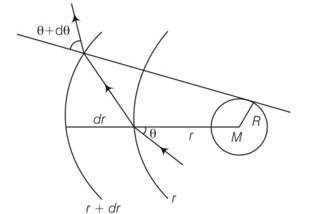
n (r)sin
-dn/drtan
So after integral r2=x2+R2 and tan
2rdr=2xdx

New answer posted
4 months agoContributor-Level 10
This is a long answer type question as classified in NCERT Exemplar
Let us consider a portion of a ray between x and x+dx inside the liquid. Let the angle of incidence at x be θ and let it enter the thin column at height y. Because of the bending it shall emerge at x+dx with an angle θ+dθ and at a height y+dy . From Snell's law,
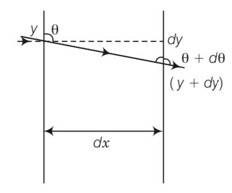
d
tan
New answer posted
4 months agoContributor-Level 10
This is a Short Answer Type Questions as classified in NCERT Exemplar
Explanation- k'max= 2kmax
K'max= hc/
2Kmax= hc/
2 (1230/600- )= (1230/400- )
So =1.02eV
New answer posted
4 months agoContributor-Level 10
This is a Short Answer Type Questions as classified in NCERT Exemplar
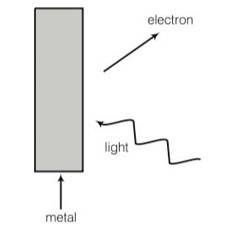
Explanation- During photoelectric emission, the momentum of incident photon is transferred to the metal. At microscopic level, atoms of a metal absorb the photon and its momentum is transferred mainly to the nucleus and electrons.
The excited electron is emitted. Therefore, the conservation of momentum is to be Considered as the momentum of incident photon transferred to the nucleus and electrons.
New answer posted
4 months agoContributor-Level 10
This is a Short Answer Type Questions as classified in NCERT Exemplar
Explanation- during photoelectric emission the momentum is transferred to metal. metal absorbs absorb the photon and its momentum is transferred, and excited electron emitted.
New answer posted
4 months agoContributor-Level 10
This is a Multiple Choice Questions as classified in NCERT Exemplar
Explanation- the debroglie wavelength of the particle can be varying cyclically between two values and , if particle is moving in an elliptical orbit with origin as its focus.
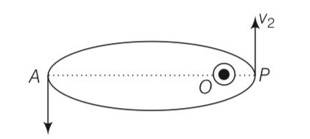
Let v1, v2, be the speed of particle at A and B respectively and origin is at focus O. If and are the de-Broglie wavelengths associated with particle while moving at A and B
respectively. Then,
=h/mv1
=h/mv2
>
So v2>v1
By law of conservation of angular momentum, the particle moves faster when it is closer to
focus.
From figure, we note that origin O is closed to P than A
New answer posted
4 months agoContributor-Level 10
This is a Multiple Choice Questions as classified in NCERT Exemplar
Explanation- energy spent to convert into water = mass latent heat
= mL= 1000g 80cal/g
= 80000cal
Energy of phtons used= nT E=nT
So nTh =mL
T= mL/nhv
T 1/n where v is constant
T when n is fixed
T 1/nv
New answer posted
4 months agoContributor-Level 10
This is a Multiple Choice Questions as classified in NCERT Exemplar
Explanation- =
Ee=1/2meve2
Meve=
Ee= h2/2 e2me
For photon
Ep= hc/ = hc/2
= 100
Pe=meve= me
New answer posted
4 months agoContributor-Level 10
This is a long answer type question as classified in NCERT Exemplar
Any ray entering at an angle I shall be guided along AC if the angle ray makes with the face AC (φ) is greater than the critical angle as per the principle of total internal reflection φ +r =900, therefore sinφ = cosr
Sinφ>
Cosr>
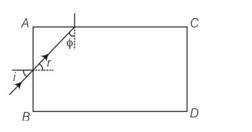
1-cos2r<1-1/
Sin2r<1-1/
Sin2r<1-1/
Sini = sinr
I=
If that is greater than the critical then all other angle of incidence shall be more than the critical angle.
1< -1
>
Taking an Exam? Selecting a College?
Get authentic answers from experts, students and alumni that you won't find anywhere else
Sign Up on ShikshaOn Shiksha, get access to
- 65k Colleges
- 1.2k Exams
- 686k Reviews
- 1800k Answers
